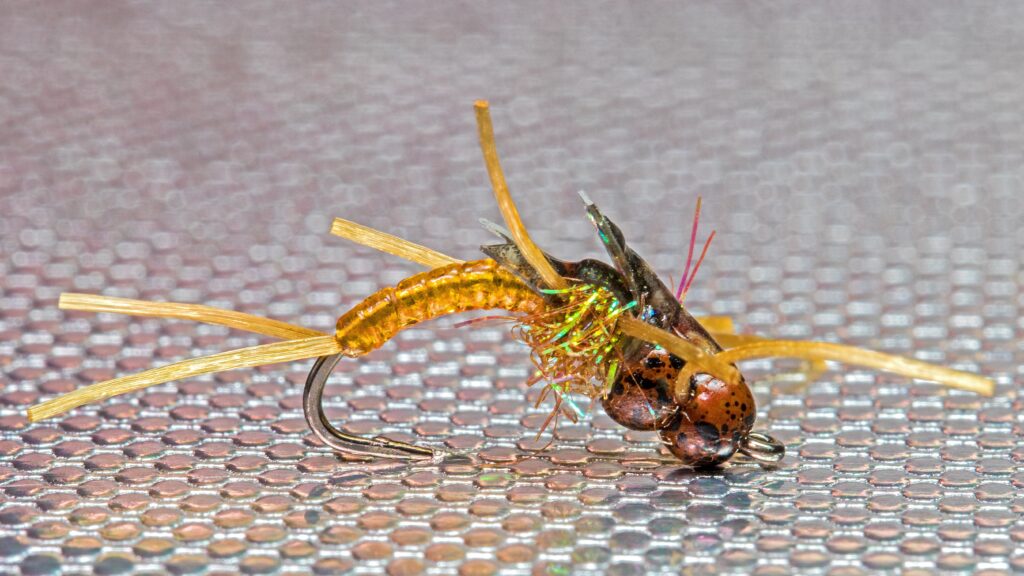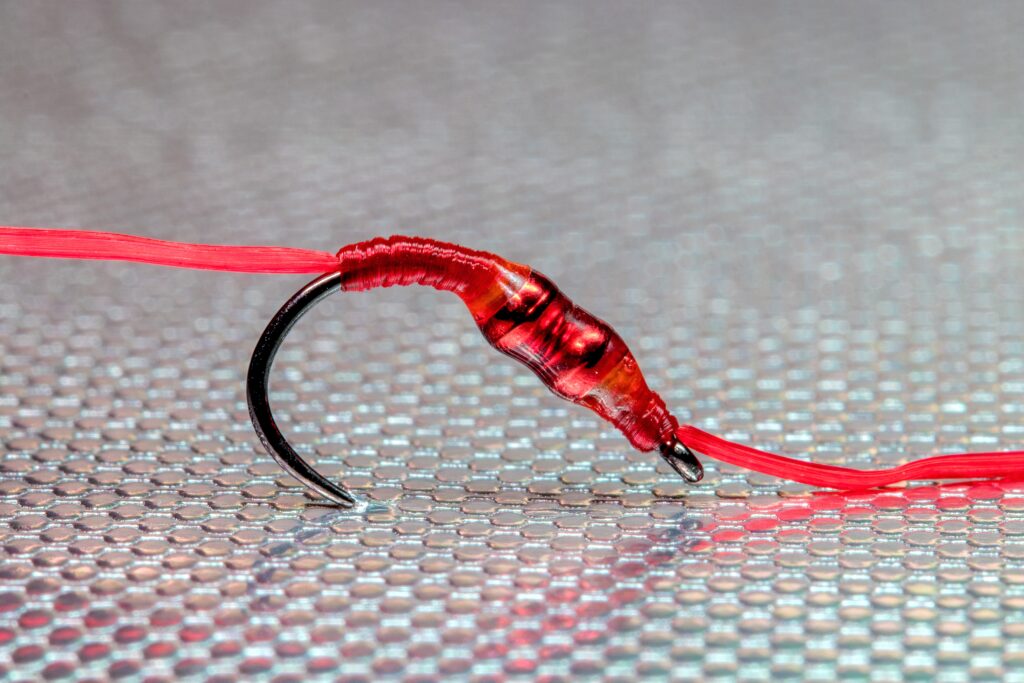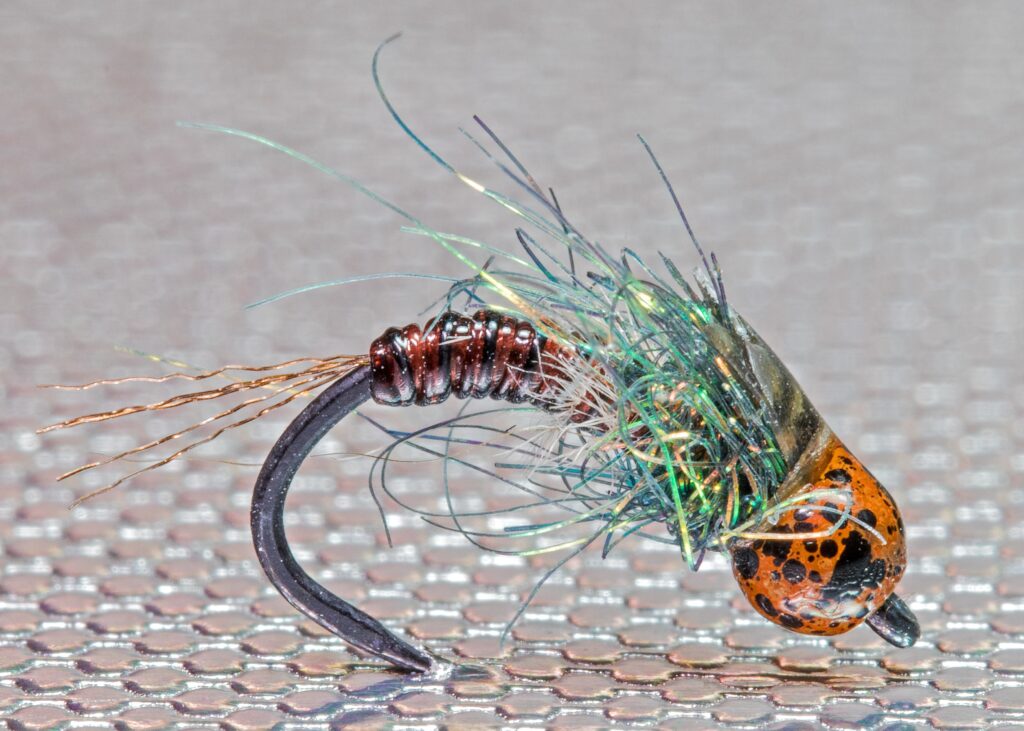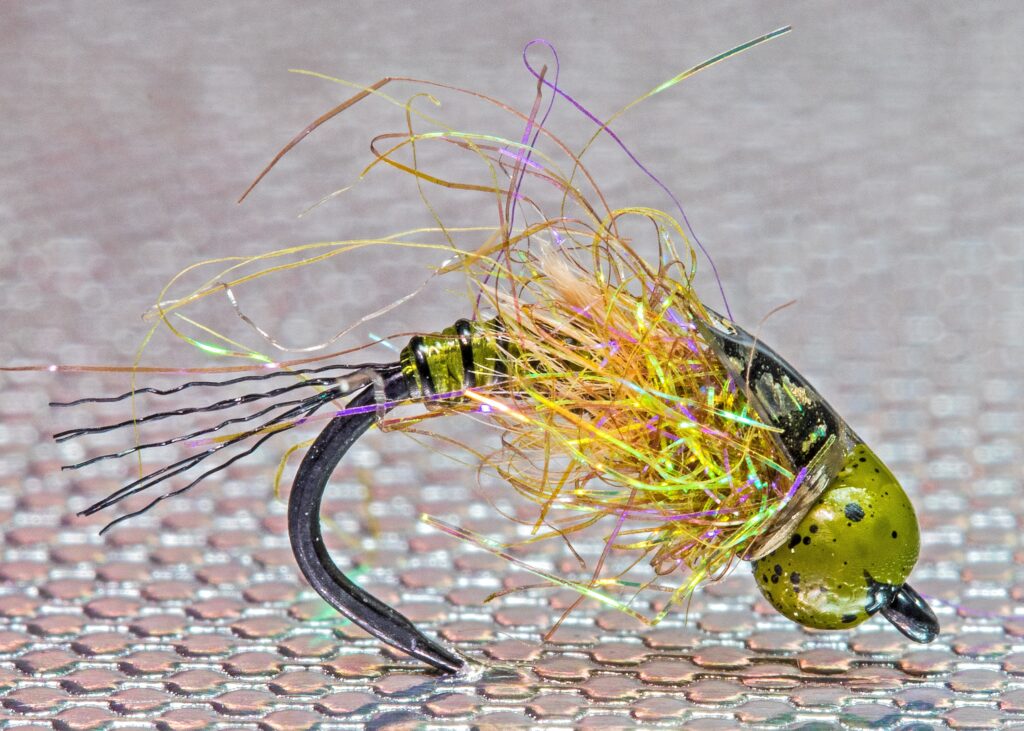
The Family Stone
When discussions surrounding stoneflies arise, images of gargantuan invertebrates come to mind. The large end of the plecopteran spectrum does play a role in the annual feeding cycle of trout. However, the more petite species and developmental stages of stoneflies should not be overlooked.
As nymphs grow, they shed their exoskeletons. These developmental stages are referred to as instars. The number of instars varies among species, from 12 to 23. As a result, there are different sizes of nymphs present during the year in the freestone streams and rivers they inhabit.
In late spring and early summer the increased flows of runoff provide enough energy to detach even the largest nymphs from the rocky substrate. This increased flow is often accompanied by a decline in water clarity. These two factors create an ideal environment for larger-profile nymph patterns. The increased weight of these artificial bugs helps get them to depth in higher flows, while their superior silhouette helps make them more visible. This window of ideal conditions is productive, yet makes up a small part of the annual aquatic food cycle.
Prior to and following runoff, the volume and velocity of the water is lower and the clarity higher. This combination creates a more suitable environment for presenting stonefly nymphs in smaller sizes. While large stonefly nymphs are still present in the substrate, their abundance in the moving water column drops due to the reduction in subsurface velocity. The smaller species and lesser instars are at a greater risk of being stripped from their holds than the big nymphs, due to their smaller size and lesser strength.
It was for this larger window of conditions that I created the Stepchild Stone. I wanted a pattern that would accurately match the structural and behavioural profile of smaller developing stoneflies. The foundation this of this pattern is its behavioural profile. Stonefly nymphs are not effective swimmers, and when knocked free by the current often assume a hunched or curled position. This action reduces their overall surface area and helps expedite their descent back to the stream bottom. The Stepchild Stone is tied on the Gamakatsu C12U hook. The shape of this hook creates a drastically hunched appearance in the fly, mimicking the behaviour of the naturals. In addition, the sturdy construction and wide gap helps to ensure that it hooks and holds fish.
In a further effort to match behavioural traits, I used MFC Sexi Floss for the tail, legs and antennae. The supple flexibility of this material allows it to crawl with life in the water. Its transparency and flat profile provide an accurate imitation of the naturals. That same element of transparency is present in the stretch tubing that is used for the abdomen. Complimenting this is the reflective quality of the Ice Dub used for the thorax. This synthetic dubbing radiates a mottled array of colours that are visible through the transparent wing cases of natural bustard Thin Skin.
While small in size, the Stepchild Stone is not lacking in weight. Its duel tungsten beads provide the mass needed for a rapid descent to the desired depth. Tactical UV Resin overlays the beads and wing cases. The fly’s sink rate is aided by the intentionally thin abdomen which offers less resistance as the fly drops through the water column.
When fishing this pattern I usually use it as the bottom fly in an indicator or tight-line setup. I have also had significant success using it as a dropper below large foam terrestrial patterns in late summer and early fall. Regardless of the application, I always attach the Stepchild Stone with a non-slip loop-knot. This provides exceptional strength and allows the fly to move freely in the current.
The Worm’s Turn
They may not be valued by all fly fishers, but aquatic worms play an important role in the food webs of many trout waters. Imitations of them can produce exceptional fishing throughout the year. Their abundance in some of the waters that I fish drove me to create my Glo Worm.
My objective was to create an annelid that could be effectively fished in indicator and tight-line riggings, but also as a dropper. To work as a dropper it needed to have sufficient weight, since I would not be able to add split shot. Tandem tungsten beads help the pattern descend quickly. By placing them at the midpoint of the shank, the hook is heavily keeled during its drift. This helps reduce snags as it glides over the substrate.
While the weight was important I also wanted a smooth contour. By using beads that were similar in colour to the body material, only a subtle variation of colour is visible. Applying beads one size smaller than the chosen hook size creates a gentler taper. The front of the beads face each other on the hook shank. This leaves the cavity of each bead available for finishing off the body material. It also forms a crisp cylindrical boundary of the bands as on the body of the natural. The appearance is further enhanced through the use of Tactical UV Resin. Additionally, UV material and Sexi Floss display a transparency similar to that of real aquatic worms. This combination of factors is bolstered by the tantalizing movement of the Sexi Floss strands.
Though atypical of rubber worm patterns, the thin profile of the Glo Worm is beneficial. This reduction of surface area, paired with its tungsten weight, rockets this pattern down to the set distance below the surface. It also lets me tie the pattern through a wider range of sizes, from size 8 down to 16. This package has fooled trout across all seasons and moving water fisheries.
Subversive Emergers
Transition stages in the subsurface development of aquatic insects are often times of vulnerability. During these metamorphic moments, the bug’s full range of motion and the responsiveness of its senses are temporarily lost. This means easy food for trout. With these factors in mind I designed my 307, a transitional mayfly pattern that is a productive divergence from the norm.
The Tiemco 2499BL-Bk hook pins itself in place in trout jaws with its upturned super point, and has the strength to handle large fish. Its matte black finish can be beneficial on heavily pressured waters.
Flouro Fiber forms the tail of this pattern. Small UTC wire inserted into midge stretch tubing is used to create raised segmentation in the abdomen. The smoothly raised divisions of the wire accent the transparency provided by the stretch tubing. This combination is very durable.
Ostrich herl and Ice Dub form the bulk of the thorax. Their movement and reflectivity suggest opaque appendages and internal gasses in the transitioning naturals. The enlarged and elevated wing case further accentuates this important trigger.
The mottled tungsten bead accelerates the 307 to the targeted depth. More importantly the mottled olive and brown colour provides a more natural look than the metallic sheen of traditional beads. This can be especially important in times of extreme water clarity. It is also beneficial on waters that see heavy fishing pressure.
Anytime mayflies are hatching, a properly presented 307 will produce fish. I often fish it as a dropper below my preferred dry in the early morning and late-day hours. During an active hatch I shorten my dropper tippet so the 307 rides six to eight inches below my dry. This can be deadly when the colouration of the fly matches the emerging mayfly. It’s also important to remember that many emerging mayflies fail to break through the surface film and subsequently perish. These failed emergers sink and drift along the bottom. As a result, the 307 is also an effective pattern for deeper water indicator-rigs.
Innovative fly tying materials are improving fly tiers’ ability to imitate natural food items with new fly patterns. As you move forward in your journey, embrace the innovation. Add these three subsurface sensations to your boxes and reap the rewards of increased durability and production.


Reece’s Stepchild Stone
Hook: Gamakatsu C12U, #16-12
Beads: Plummeting Tungsten (one size smaller than hook)
Thread: 8/0 or 70 denier, matching bead colour
Tail: Micro Sexi Floss, matching tubing colour
Abdomen: Midge Stretch Tubing
Legs: Micro Sexi Floss, matching tubing colour
Thorax: Ice Dub
Wing Case: Natural bustard Thin Skin
Antennae: Nano Sexi Floss, matching tubing colour
UV Coat: Tactical UV Resin


Reece’s Glo Worm
Hook: Tiemco 2499BL-BK, #16-8
Beads: Plummeting Tungsten Metallic (one size smaller than hook)
Thread: White 70 denier
Body: Medium Sexi Floss, matching bead colour
UV Coat: Tactical UV Resin


Reece’s 307
Hook: Tiemco 2499BL-BK, #18-14
Bead: Plummeting Tungsten, mottled (sized to hook)
Thread: 8/0 or 70 denier, matching bead colour
Tail: Flouro Fiber
Abdomen: Small Black UTC wire in Midge Stretch Tubing
Rear Thorax: Ostrich herl
Main Thorax: Ice Dub
Wing Case: Natural bustard Thin Skin
UV Coat: Tactical UV Resin
Article Originally Published in Fly Fusion Magazine Volume 15, Issue 2


